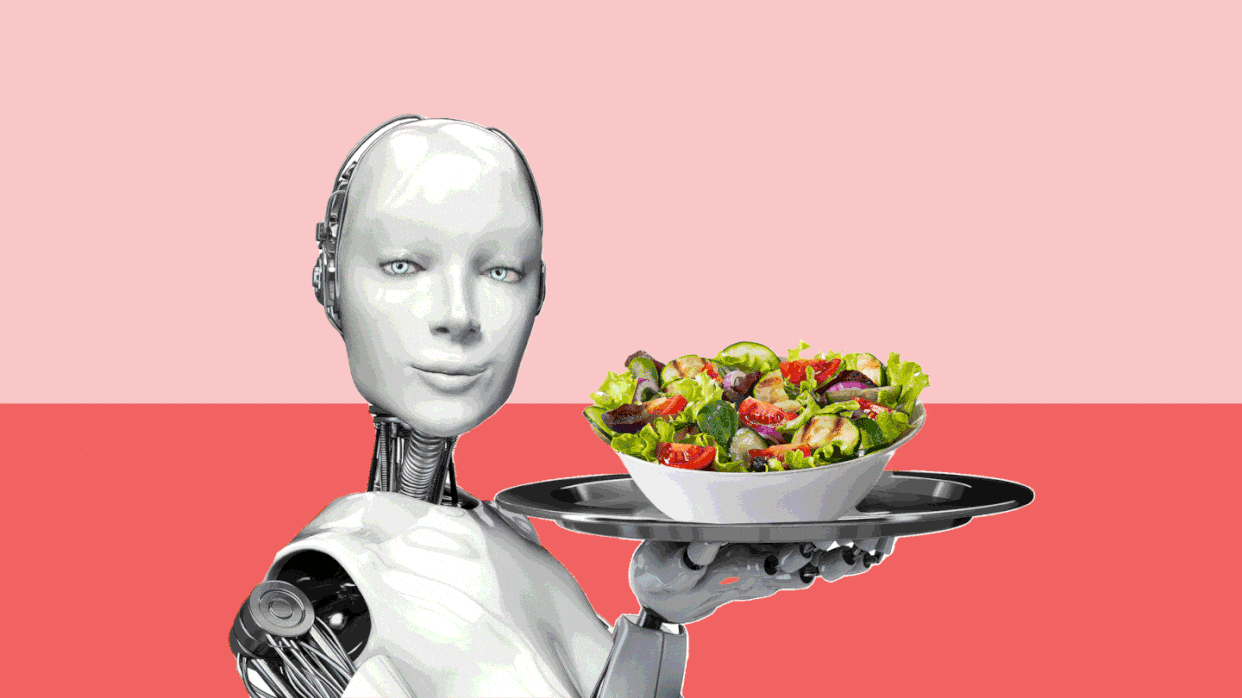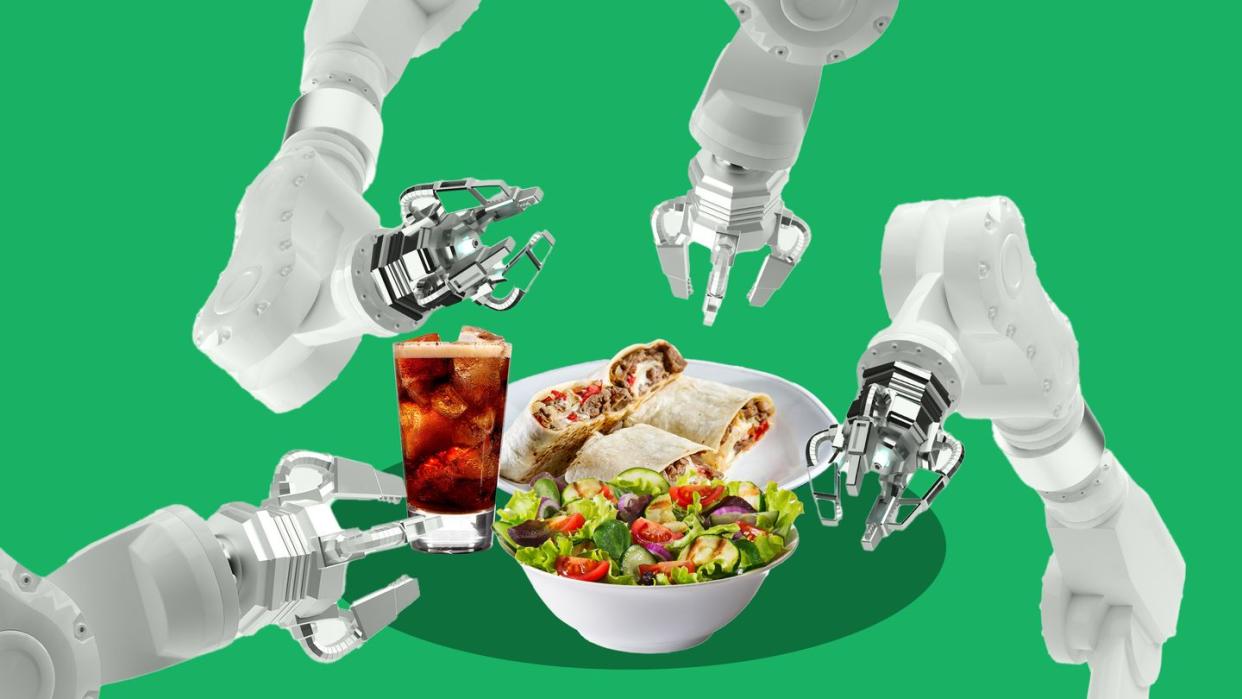Robots Are Invading Your Favorite Restaurant

"Hearst Magazines and Yahoo may earn commission or revenue on some items through these links."
If you grew up wishing for flying cars and jetpacks, you'll be happy to know that the future is finally here. At least when it comes to robots working at restaurants.
That's right, robots are getting all the new jobs at your favorite quick-service restaurants. Chains like Sweetgreen are installing robot chefs with built-in tubes that dispense ingredients to make salads. Robots shooting out kale weren't on my 2023 bingo card, but it should have been, since a robot made me a banana latte at the San Francisco airport.
Robot workers are also becoming popular at Chipotle, which has been training them to make bowls and salads, fry up tortilla chips, and mix guacamole. Which makes you think: Can restaurants still call their dishes "handmade" or "handcrafted" if they were made by the tubes and claws of a robot? Probably not.
Why are there so many fast food robots?
It's the ultimate example of "work smarter, not harder." For many fast-casual and fast-food restaurants like Panera Bread, McDonald's, or White Castle (whose fry-cooking robot is named Flippy 2), many tasks like frying, dispensing, or mixing can be given to robots. More delicate work like rolling a burrito, chopping, or simply delivering good customer service is still being done by actual humans.
Labor costs are rising, and companies are often unwilling to raise pay rates for actual humans. Robots allow chains to serve customers more quickly and efficiently, measure ingredients more accurately, and help reduce wait times despite labor shortages.

They're not just behind the counter; the robots are coming to your table, too.
If you think you've stumbled into an episode of The Jetsons, you're not far off. Robot waiters are absolutely a reality now, especially with chains like Chili's that have been testing robots who will greet you, lead you to your table, and also serve you your food. While Chili's has paused their use of robots in the front of house (stating that human servers are much quicker), that steak you ordered was most likely seared by a back-of-house robot, in just about three minutes, too.
Robots are also proving to be useful for restaurant and grocery store deliveries. Perhaps most eerily, food-delivery robots, like the ones deployed by Amazon and UberEats on many college campuses, are, in fact, pretty darn cute as they stroll down the street. These robots are designed to seem more human-like and nonthreatening, with rounded edges and flashing lights so it looks like it's thinking real thoughts. That way, you're more likely to not vandalize it or allow it to accidentally roll into oncoming traffic.
But do we really want robots making our food?
There are a few risk factors to consider, namely food allergies and the risk of cross contamination. A sentient human can take orders and substitutions that may be complicated and ever-changing per customer. A robot, however, is just being fed demands and can't always keep track of whether someone has a food allergy. This could lead to lawsuits that could have been avoided had there been a real person behind the counter.
The rise of robot labor also sends a clear message to the many millions of people who sustain their lives off of restaurant work: You can be easily replaced.
Many states still only pay tipped wage workers $2.13, so the use of robot labor further lowers the standards we have for maintaining safety and quality of life for restaurant workers and delivery workers. That being said, this risk has been mostly kept at bay so far. Case in point: Peanut the Robot, who, while useful in some regards, has proven that robots are still clumsy and kind of dumb. Many front-of-house robots, like those at Chili's, are also not autonomous and need to be used hand in hand with a human counterpart as a tool rather than an outright replacement.
At Sweetgreen's fully automated "Infinite Kitchens," robots do most of the work making salads and bowls. The system can make up to 500 bowls every hour. Chipotle's robots reportedly can do up to 65 percent of their digital orders. Of course, small groups of human employees could never work as quickly. And with human error, you would think that the chopped veggies would be less uniform. But it does make you wonder what would happen if a robot malfunctioned and crashed during the lunch rush. That could lead to a literal rage against the machine. As TikTok commenters asked about an automated McDonald's: "Who are all the Karens supposed to scream at now? The robots?" and "Bet their ice cream machine is still down though."
Perhaps, in those cases, it'll be more so a "just turn it on and off" again situation. Fingers crossed that's all it would take.
You Might Also Like
